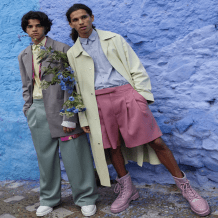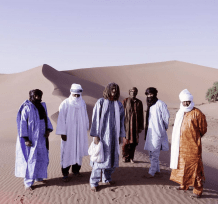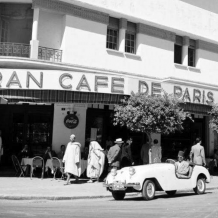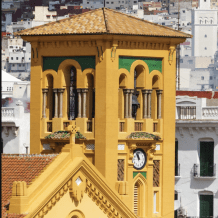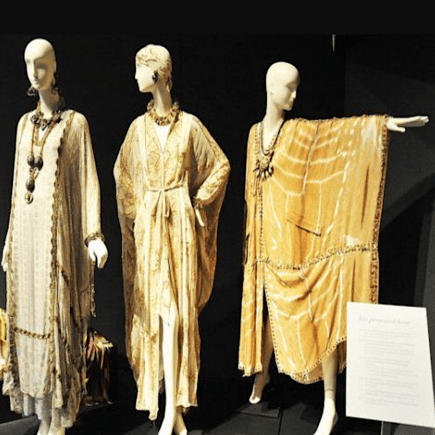
How to Design Your Own Moroccan Kaftan
Since the 16th century after the Muslims and Jews emigrated to Morocco from Andalusia, the kaftan has been mentioned in Moroccan culture and fashion. Originally, the lavishly adorned garment was used as a coat or overdress and had the practical job of ventilating the body for both men and women. Starting from the middle 20th century, however, the kaftan became an exotic and desired fashion trend. Elegantly embroidered kaftans have been traditionally worn for special events such as weddings, ceremonies and birthdays. Today however kaftans are worn as smart casual pieces and made by both local Moroccan and foreign designers offering in ready to wear collections. The Moroccan Kaftan has become a burgeoning trend as celebrities, political figures, and models worldwide have adopted this traditional dress design as part of their wardrobe.
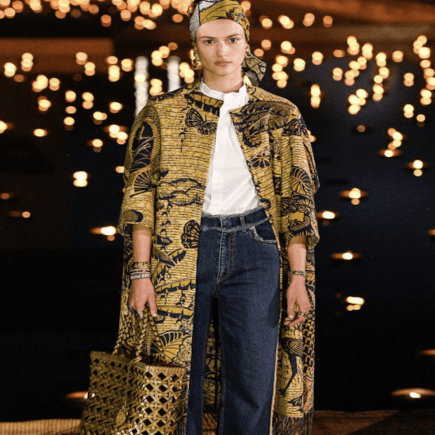
The Moroccan Kaftan has been passed down through many generations
In 2019 alone, there have been several occasions where the Moroccan kaftan made a powerful fashion statement. In Spring, Christian Dior launched his 2020 Cruise Collection Fashion Show in Marrakech at the El Badi Palace and featured several kaftan inspired looks. Ivanka Trump was also spotted glittering in a gold Moroccan gown when she met with Princess Lalla Meryem during her November 2019 Women’s Empowerment trip to Morocco. Kaftans were also the focus of Morocco in Abu Dhabi Fashion Festival 2019. Reflecting on the show, designer Sofia Ben Ibrahim expressed “The Kaftan has been passed down through many generations.”
Over the years kaftans have been spotted on everyone from the Beatles on their tours, to many influential and powerful figures like Gisele Bundchen, Hillary Clinton, and Saudi Princess Ameera al-Taweel. Even Meryl Streep wore a silky ivory-gold caftan in her 2018 film The Post. England’s British duchess Camilla Parker Bowles also adores the kaftan. After attending the Rabat kaftan fashion show in 2011, she began to be referred to as the “the queen of caftans.”
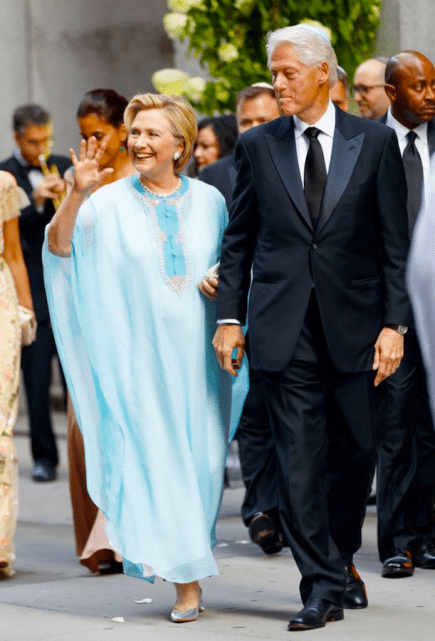
Moroccan Kaftan with Bill Clinton
Moroccan Kaftans Come in Several Styles
There are several different styles of kaftans. They range from the most basic cotton pieces for lounging to extravagant gowns with unique embroidery for special events. Each region of Morocco has their own kaftan design styles. In Rabat, a key feature of kaftans is their colorful threads, floral designs, leaves, and elaborate stitching. Kaftans in Meknes and Fes are adorned with geometric shapes like squares, triangles, and straight lines. These different modes are the result of Morocco’s varied history. The kingdom’s indigenous people are Berber and make up over 70% of the population. The country however has been occupied by the Phoenicians, Portuguese, British Spanish, French, and even the Ottomans who captured Fes in 1554. Before the Kaftan arrived in Andalusia it was worn by the Ottoman sultans. The dominating Ottoman presence was felt worldwide for centuries.
Kaftans have been a long source of inspiration for designers everywhere. Notably, Lebanese Haute Couture designer Elie Saab and the iconic Yves Saint Laurent have created collections inspired by the Middle Eastern-North African look. Marrakech’s Yves Saint Laurent Museum has a dedicated collection of Laurent’s kaftan dresses. Travelers to Morocco are often impressed with the beautiful robes they see in the YSL museum and in the souks.
The popularity and evolution of the Kaftan has made it a fun piece to shop and add to international wardrobes alike. Kafatans can be purchase in Marrakech concept stores such as 33 Rue Majorelle, Max & Jan, Kaftan Queen, or at Norya Ayron. It is also possible shop for fabric and commission a local Moroccan tailor to hand-make your own kaftan.
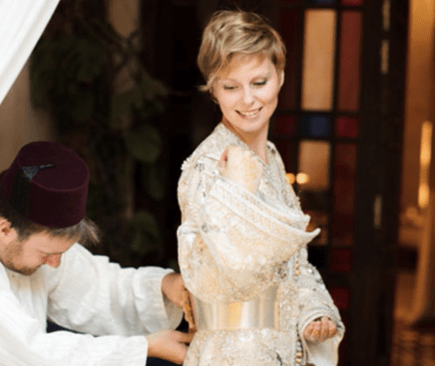
Our FAQ Moroccan Kaftan Guide. How to Make Your Own Kaftan (Caftan)?
In determining what kind of kaftan is right for you, it is important to consider where you will wear your kaftan. Some kaftan materials are made from easy and light fabrics. These include cotton or chiffon silk and best for casual situations like relaxing at your home or meeting a friend in the medina. Morocco has a hot desert climate so women enjoy dressing in casual kaftans to feel at ease and cool down their bodies. For evening events and parties, a silky and more textured kaftan fabric is recommended.

1. Visit the Moroccan souk and select fabric for your Kaftan
2. Purchasing the fabric for your Kaftan
3. How long will it take to make my Kaftan?
4. Where can I get inspiration for my Kaftan look?
As kaftans have become haute couture items, there are many fashion designers whose creativity will be a great source of inspiration. Among them are Dahab ben Aboud and Mohamed Lakhdar, both of who have taken the traditional kaftan and turned it into a more accessible and contemporary look. Their kaftans can be seen regularly in runway shows in both Morocco and Europe. Similarly, celebrities like Kim Kardashian, Oprah, Beyonce, and Uma Thurman have appeared in red carpet events wearing a kaftan style gown.
5. Where can I find Sfifa (embroidery) inspiration for my Kaftan?
6. What is the best way to accessorize a Kaftan look?

5. Where can I find Sfifa (embroidery) inspiration for my Moroccan kaftan?
Sfifa is a traditional Moroccan craft that can be seen on certain textiles and fabrics. Unfortunately, it is dying out in Morocco. but certain designers are working to keep it alive. Morocco’s Fadila el Gadi opened up the Ecole Broderie in Sale-Rabat to teach underprivileged children the lost art of stitchery. Recently Ivanka Trump asked El Gadi to design her an embroidered jacket for her November 2019 visit to Morocco.
6. What is the best way to accessorize a kaftan look?
Moroccan women pair their kaftans with gold or silver heels, sparkly earrings, and a glamorous makeup look.
7. Can I rent a Moroccan kaftan?
If you are in Morocco and want to experience wearing a kaftan without purchasing one, there are kaftan rental shops that offer a wide selection of choices. Depending on the look and detailing of the kaftan, they cost between $15-40 USD per day to rent.
Is a Moroccan Kaftan the same as a Moroccan djellaba?
Sometimes people confuse these two words because both garments are long and can be used as a cover-up. However, they are worn in different contexts and have different histories and styles. Furthermore, a djellaba has a hood whereas a kaftan does not. Djellabas are traditionally worn by Berber or Amazigh men living in the Atlas Mountains and they are made from wool. Today it is possible to see lightweight cotton djellabas in different colors worn by Moroccan men and women in the medina.

